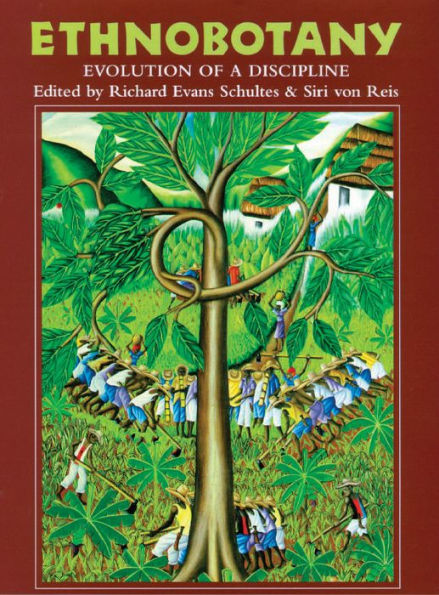
Ethnobotany: Evolution of a Discipline
416
Ethnobotany: Evolution of a Discipline
416Paperback
-
PICK UP IN STORECheck Availability at Nearby Stores
Available within 2 business hours
Related collections and offers
Overview

Product Details
| ISBN-13: | 9780881929720 |
|---|---|
| Publisher: | Timber Press, Incorporated |
| Publication date: | 05/19/2008 |
| Pages: | 416 |
| Product dimensions: | 7.00(w) x 10.00(h) x 0.88(d) |
About the Author
Read an Excerpt
Plants have always been more important than politics — both to human daily living and to history. Even today, millions of subsistence farmers have no idea who their nominal political leaders are, but they know a great deal about their plants — sometimes even more than scientists. Furthermore, plants have had a greater historical impact than have politicians. An excellent example is provided by the few wheat seeds of an unknown Mennonite who stuffed his (or more probably, her) pockets before leaving the Russian steppes in the 1870s. Those seeds grew into plants so tolerant of cold that they made winter wheat a practical reality for the United States and Canada. By 1919, Turkey red, resulting from the gift of those destitute foreigners, accounted for ninety-eight percent of winter wheat in the United States. Its contribution to generations of North Americans, including farmers, millers, freight-train operators, bakers, accountants, capitalists, and consumers, has been far greater than the contributions of the presidents of the 1870s, not to mention the thousands of lesser legislators of that decade.
Mennonite wheat is just one of dozens of plants, many of them from primitive aboriginal societies, that directed and changed history. Southeast Asia's banana so transformed Central American republics that their economies now rely on this fruit for their survival, and South America's pineapple changed Hawaii from a sleepy, exotic way station to an outpost of hard-driving enterprise from which it has never recovered. In less than a century the Amazon's rubber tree revolutionized industries and lifestyles around the world. Africa's oil palm probably changed the landscape of large parts of Southeast Asia more than World War II did, and quinine from Java's cinchona plantations affected the overall tropics in a way that no political ruler could ever match: it has saved thousands of lives.
By the beginning of the twentieth century people began to forget the plant world's significance to themselves and their history. But now the plants and their age-old relationships with humans are returning once again to prominence. Human history is based in great part on ethnobotany, the precious knowledge of the properties of plants among indigenous people amassed over millennia.
This volume, therefore, can be seen as a kind of prehistory that tells much about our past, but also much about our present and future. It outlines and details the evermore vital links that have connected people to their plants and that still connect them. And ethnobotany can give us a glimpse of the world to come.
Table of Contents
Foreword. Preface. Acknowledgements. Contributors. Part One: General ethnobotany. Part Two: Socioethnobotany. Part Three: Historical ethnobotany. Part Four: Ethnobotanical conservation. Part Five: Ethnobotany in education. Part Six: Ethnobotanical contributions to general botany. Part Seven: Ethnobotany and geography. Part Eight: Ethnopharmacology. Part Nine: Ethnomycology. Part Ten: Archeaoethnobotany. Index of scientific names.
